Things don't always go to plan

The Nature of Ideas and Plans
Things don’t always go to plan. There are a couple of tracks of thought with this. One is that you might not have a plan and are just floating through life, seeing what happens. Most of us think we have plans, but sometimes they are just ideas. It’s important to differentiate the two.
An idea is something you think about doing, or think it would be good to do. You might have lots of ideas. I’ve experienced this myself. I talk about lots of ideas, and then people say, “Oh, you said you were going to do this thing.” But in reality, I hadn’t put anything in place to make that happen. That’s the difference between an idea and a plan.
The Plan for a Studio Outbuilding
I’ve had plans for things. For instance, anyone I’ve spoken to in the last few years probably knows about my studio outbuilding project. Originally, it started partway through the Covid lockdown. The idea was to build a studio that would serve as an art studio space for my wife, as well as a creative workshop space for myself in our garden.
I set about drawing some plans and decided to follow some YouTube videos on constructing the floor, walls, and roof. After doing loads of research, I began the project. However, it turned out to be more challenging than anticipated. I pulled up the turf, dug the footings, and laid some bricks. But I quickly realised I had made some planning mistakes and had to re-dig the footings.
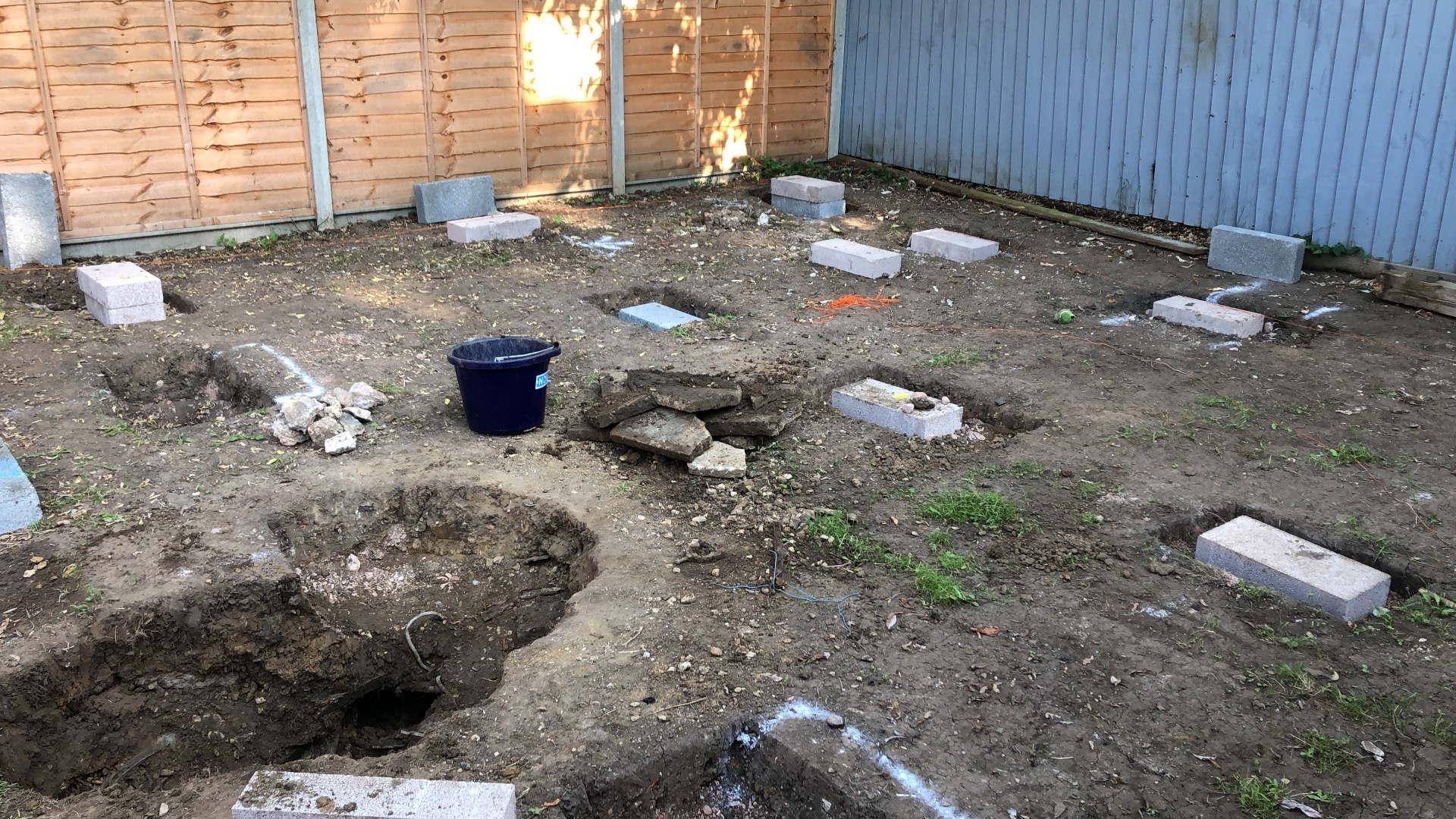
Unexpected Challenges
During this process, I discovered a bunch of buried metal and rubbish underground. This unexpected obstacle meant I had to spend days digging it all out. Eventually, I hired a digger and spent most of the summer removing old metal, an old fence, car tyres, and bags of rubbish. It turns out that in the 60s, before regular rubbish collection, people used to bury their waste in their gardens.
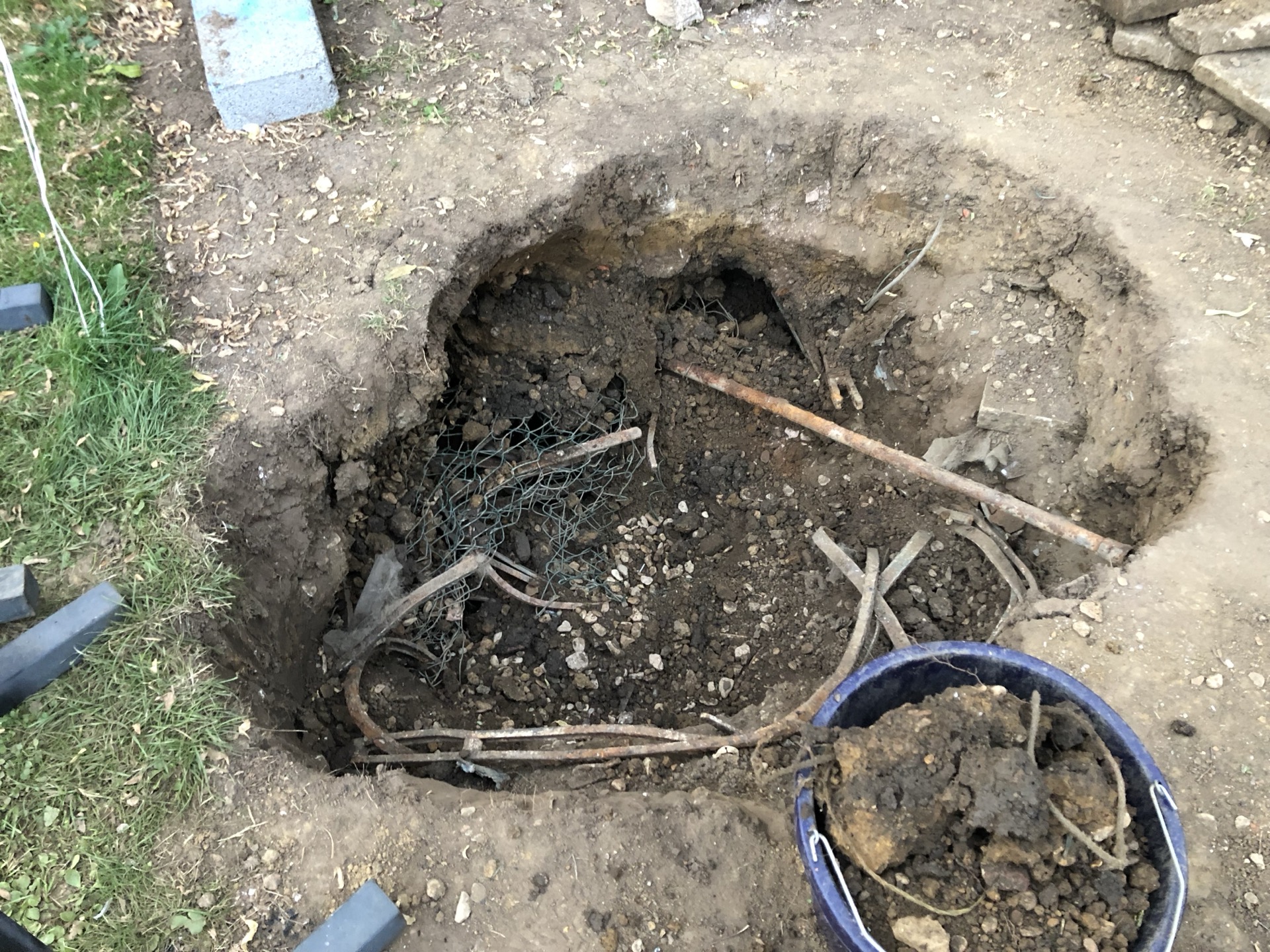
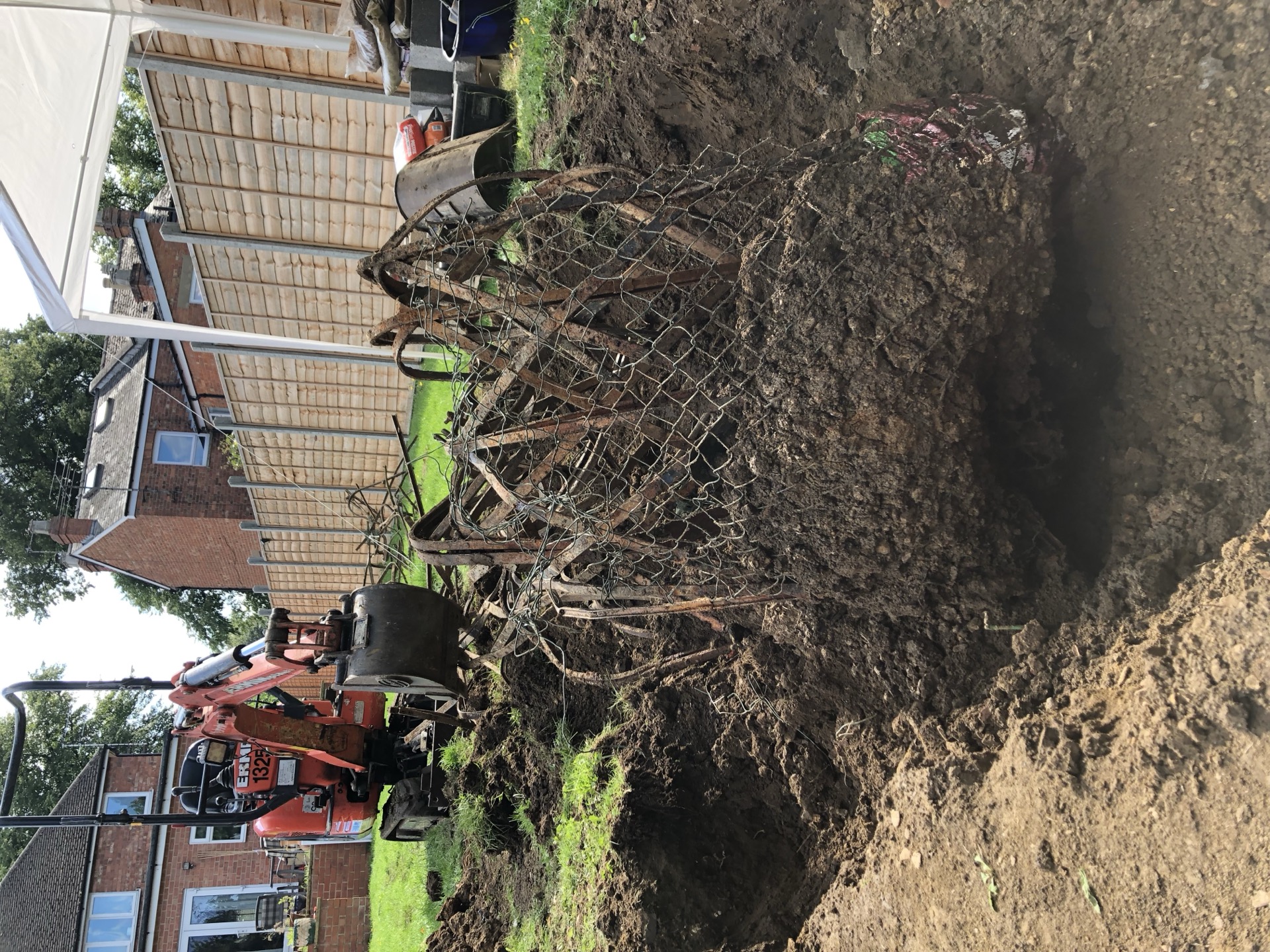
This setback cost me a lot of time.
When undertaking projects like this, you need three things on your side: time, money, and good weather.
Unfortunately, in the UK, weather is always a challenge.
The following summer, building materials had become much more expensive due to supply chain issues, so money was an issue. Despite these challenges, I continued with the project as best as I could.
Reviewing and Adjusting the Plan
After several summers of delays, this summer, I decided to review my plans instead of just picking up where I left off. I re-evaluated the steps I needed to take, budgeted everything out, and noticed that prices had returned to normal. The weather was also favourable.
With everything aligning, I carved out some time and started building the floor, adding insulation and sheet material.
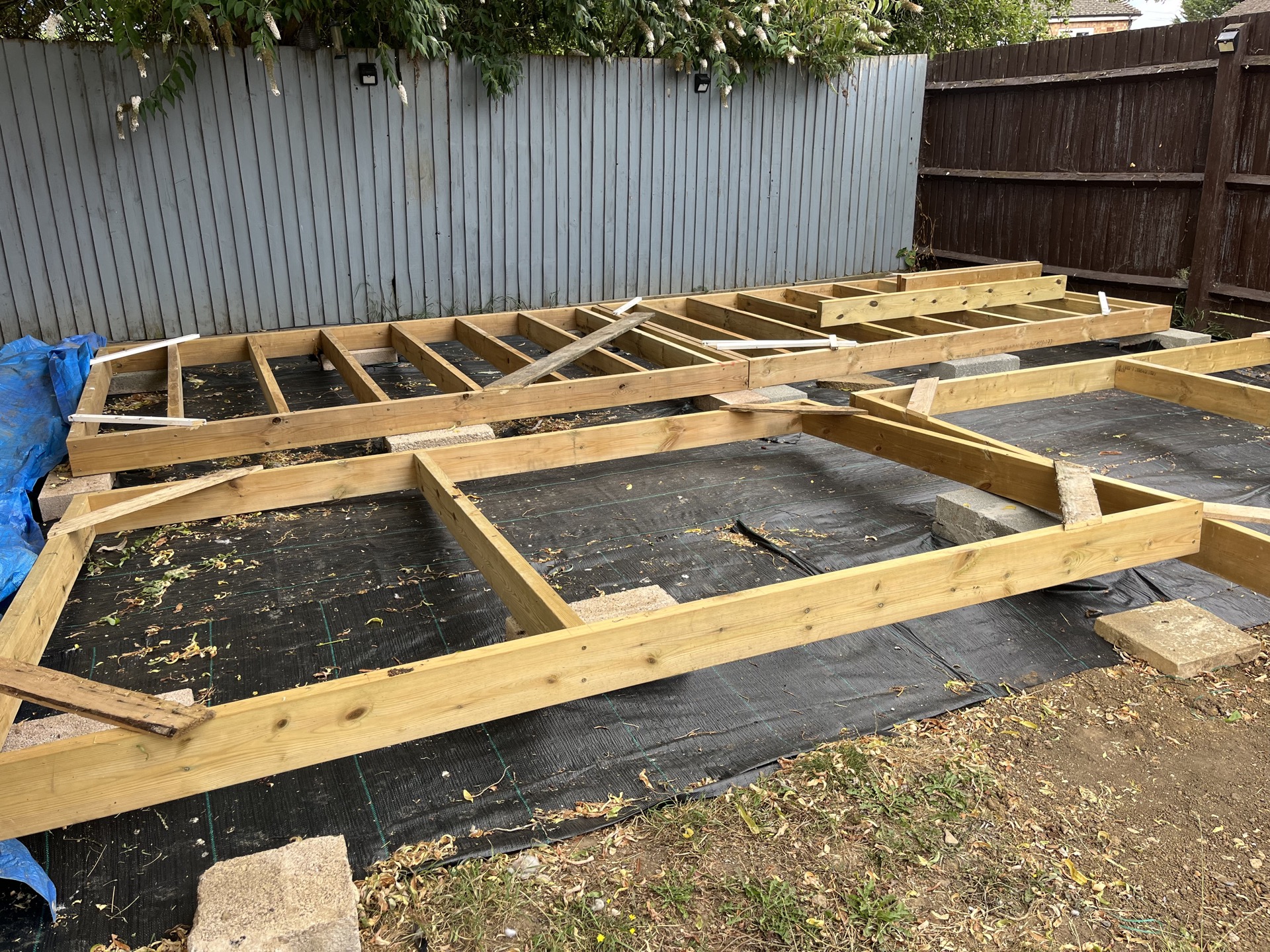
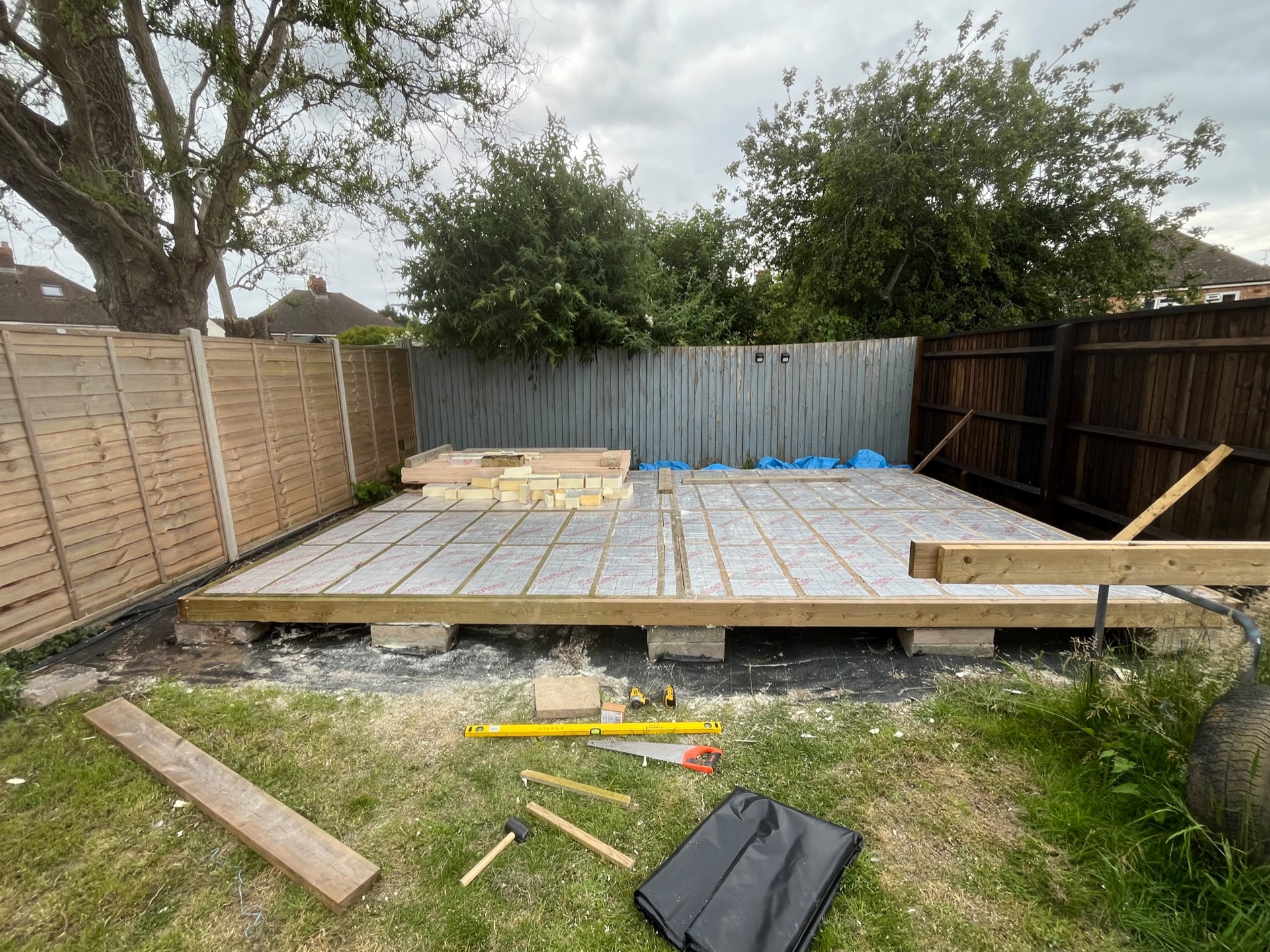
Learning and Seeking Advice
Throughout this process, I realised I lacked some skills and had to spend more time learning. Although the floor isn’t finished yet, I now have a better understanding of what comes next. I also know that projects often take double or triple the time you initially estimate.
During my work, my friendly neighbour, a builder, gave me some advice on what I was doing. A lot of my approach was not how it’s usually done in the trade it seems…
Initially, I felt bad for not doing things the ‘right way’. But I remembered that the original idea was to learn while building something that wasn’t time-critical. This reflection helped me appreciate the learning process and the new skills I acquired, such as mixing mortar, driving a digger, using a plunge track saw, and fitting insulation.
It wasn’t initially about getting things done quickly.
Embracing the Journey
While reflecting on this project, I remembered something I often talk about with digital projects - that changes are inevitable. Priorities and dependencies change over time. It’s ok not to feel bad about not being where you think you should be, because you might be ahead of where you initially planned.
The key is to adapt and learn along the way.
Actionable Insights
So how does all of this relate directly to the work I usually talk about? To wrap up, here are some actionable insights that can benefit digital agencies and web development teams:
- Distinguish Between Ideas and Plans: Hold regular brainstorming sessions to capture ideas, followed by structured planning meetings to prioritise and assign resources. Use project management tools to convert ideas into detailed plans with timelines, responsibilities, and milestones.
- Thorough Initial Planning: Before starting a new project, research and plan in detail. Create comprehensive project documentation, including scope, objectives, resources, risk assessments, and contingency plans. This reduces the likelihood of encountering unforeseen challenges.
- Expect the Unexpected: Allocate time and resources for handling unforeseen issues. Maintain a flexible project schedule and budget to accommodate surprise challenges. Regularly review and adjust project plans to reflect the current situation, and encourage a proactive mindset in your team.
- Regularly Review and Revise Plans: Implement a system for regular reviews of project progress, budgets, and timelines. Make necessary adjustments to keep the project on track. Being disciplined with this helps in optimising resources and improving efficiency.
- Continuous Learning and Seeking Advice: Build a culture where team members feel comfortable asking for advice and sharing knowledge. This builds an individual’s skills and also strengthens the overall team capability.
- Embrace Change: Accept change as part of the project lifecycle. Use agile methodologies to allow for flexibility and continuous improvement. Regularly reassess project goals and adjust strategies as needed. Encourage your team to view changes as opportunities for growth rather than setbacks.
- Structured Evaluation of Ideas: Implement a structured process for evaluating and prioritising ideas. Use tools like idea funnels or a scoring matrix to assess the potential impact and feasibility of ideas. This helps in focusing efforts on the most valuable initiatives and helps keep everyone aligned and accountable.
The Difference Between Plans and Ideas
It’s important to understand the difference between plans and ideas. Ideas are great, but they don’t all need to be executed. Making a plan helps you prioritise and determine the feasibility of an idea. It keeps you accountable and helps you not feel bad about not executing all the ideas you come up with. Things don’t always go to plan. You need to adapt, and sometimes change the plan or even the outcome you’re working towards.
It’s good to have ideas.
Don’t let anyone tell you otherwise.
